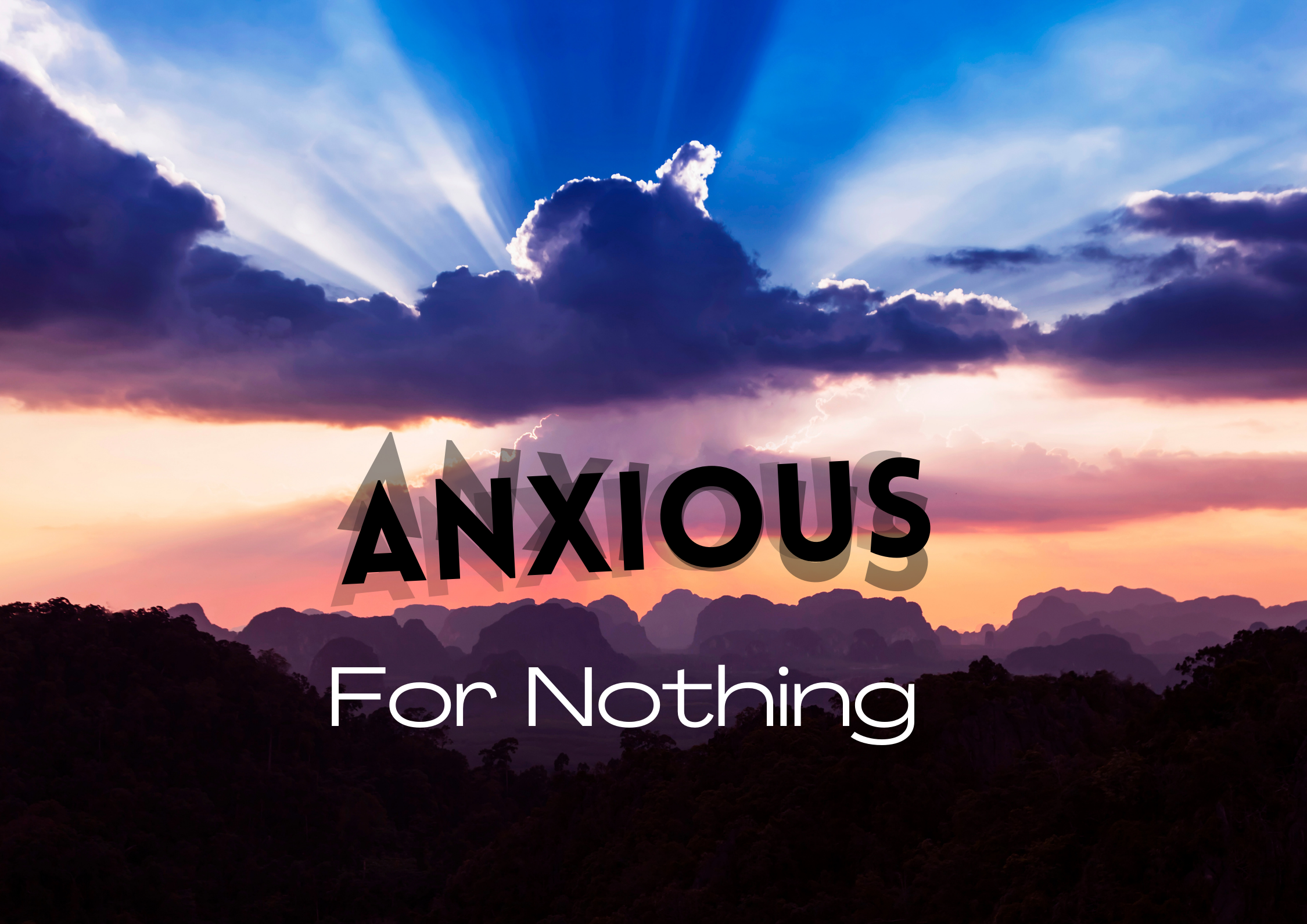Talk 1 | Anxious for Nothing
In 1990, NASA instructed the Voyager 1 Spacecraft to take a photo of the Earth as it left the solar system, 6 billion kilometres away. In the photo, earth is a pale blue dot, barely distinguishable from the darkness of space. Carl Sagan, an American scientist and astronomer, and regarded as an agnostic, would write, “Consider again that dot. That’s home. That’s us. On it, everyone you love. Everyone you know. Everyone you have ever heard of.” [1] Sagan saw the wonder of the universe, but ultimately, to him it was still meaningless.
Albert Camus, French philosopher and author, saw humanity caught in the tension between human desire for meaning and a seemingly meaningless universe. For example, many young people are suffering from ‘climate change’ anxiety, based on an ideology that is apocalyptic, with no saviour. Cultural anxiety is flowing through social networks, as the more connected the world is, the more conflicted it is and therefore, a more anxious world. This is coupled with the fact that our society no longer looks to religion as an explanatory system to answer the cosmic questions of life, and so people no longer live as whole people with a coherent understanding that takes in all aspects of existence lived personally and communally in the created order.
Research launched in late 2019 by author Mark Sayers’ research company, Barna, did a global study of 15,000 millennials and Gen-Zers from 25 countries. The first section in the report was called, ‘Life in an Anxious Age’. Despite being more connected than any other generation, they struggled with anxiety. “This took many forms, from anxiousness about important decisions, feeling pressured to succeed, experiencing uncertainty, loneliness, or mental health issues …. and this was prior to the Covid pandemic.“[2]
Besides the malaise of cultural anxiety, the frantic pursuit of individualism has seen the highest virtue in secular society be personal autonomy. But this means that a person must manage their own anxiety and so put up walls to protect themselves, in order to gain more personal freedom. Feeling happy becomes the norm and so institutions such as schools are required to be ‘safe places’, a place where “ease and good feelings is known as a comfort zone.” [3] Here our relationships and beliefs are not to be challenged so that anxiety can be kept out. Good feelings trump spiritual growth and character formation.
The late Edwin Friedman, Rabbi and family therapist, noted that “anxiety escalates as society is overwhelmed by the quantity and speed of change.” [4] With the devaluing of institutions that mediate wisdom for a healthy civilisation, individuals are left to absorb the anxiety that is transmitted through human interactions. What matters is how I am perceived by others, and this leads to constant anxiety.
How can Christian teachers embed a different way in their classrooms, for teachers are to provide the ‘rich soil’ in which students can grow to be the people God designed them to be? God’s faithful presence dwells within the teacher and His Holy Spirit is working in the lives of the students. Resting in Christ, we can be a ‘non‑anxious’ presence as our lives are anchored in the amazing story of living throughout time and eternity in relationship to our Creator and within a purposeful creation. If we are to be signposts of hope in the 21st century, then we must help our students to see God’s Kingdom in their midst. We want our students to embrace hope and purpose, for a ‘groaning’ creation is emerging into new life because of Jesus’ death and resurrection. This is the story that they are invited to locate their lives in, and this gives meaning to all of life and their futures.
In an ‘anxious’ world, we need to help students to connect with reality in age‑appropriate ways, for failure to do so creates fragile and anxious children and adolescents who lack resilience. The classroom is to be a ‘safe place’, not where they are coddled or protected from reality, but a secure place where they are known, loved and have a sense of belonging. In this context they can grow by recognising their own fallenness and need for God’s grace. Their character will be formed through the challenges and struggles of relating to their teachers and peers in a way that reflect love of neighbour. We can help them embrace the tension of living in a broken world, but one in which God is ‘making all things new’.
How can we do this? Let us consider:
- What opportunities do students have to share their joys, doubts and anxieties and to pray together to trust in God’s providential care for one another?
- Is our discipline restorative? Do we help students to take responsibility for their attitudes and actions and to recognise their sin and failings? Do we help them to experience God’s grace and forgiveness and restore relationships?
- How do we grieve and engender hope in our communities when sad and tragic events occur?
- How do we provide opportunities for students to offer sacrifices of love to others in need?
- How do we help them to understand a broken world and engender hope in its final restoration through Christ and His Gospel work?
Let us constantly rejoice with our students that God’s Kingdom is unshakeable and this is our story.
Grace and peace
The Excellence Centre Team
“Cast all your anxiety on Him because He care for you. Be self‑controlled and alert. Your enemy the devil prowls around like a roaring lion looking for someone to devour. Resist him, standing firm in your faith, because you know that your brothers throughout the world are undergoing the same kind of sufferings.”(1 Peter 5:7,8)
(1 Peter 5: 7, 8)
[1] Carl Sagan, Pale Blue Dot: A vision of the Human Future in Space, (New York: Random House, 1997), 15 ‑ 16
[2] Mark Sayers, A Non-Anxious Presence – How a Changing and Complex World Will Create a Remnant of Renewed Christian Leaders, (Chicago: Chicago Moody 2022), 7
[3] ibid, 107
[4] ibid, 42

